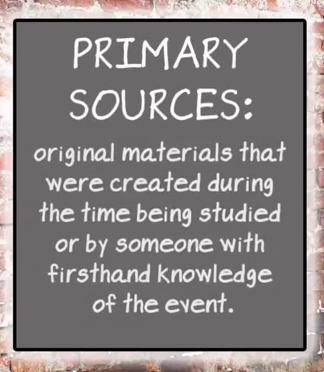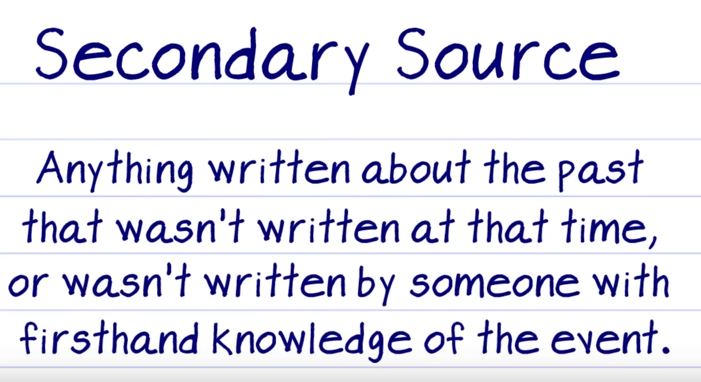Thinking Like a historian
Historical Thinking Skills
|
Historians use several skills to understand the past.
• Analyze Primary and Secondary Sources • Examine Source Information (who, what, when, why) • Read Multiple Perspectives and Accounts (bias and perspective) • Understand Historical Context (what was happening before, during, and after the event) • Use Evidence to Make and Support Claims (prove it!) |
Primary & Secondary sources
You can learn about the difference between primary and secondary sources by reading or watching the videos below. Click on these links to read about primary sources and secondary sources.
Analyzing Primary Sources for NHD:
Identifying Primary Sources, questions to ask when using primary sources, and understanding the turning point and historical significance of your topic.
Examples of Primary and Secondary Sources
Analyzing Primary Sources for NHD:
Identifying Primary Sources, questions to ask when using primary sources, and understanding the turning point and historical significance of your topic.
Examples of Primary and Secondary Sources
|
|
|
reliability of sources
|
|
|
plagiarism
|
WHAT IS IT?
plagiarism play noun pla·gia·rism \ˈplā-jə-ˌri-zəm\Definition of plagiarism for Students
Plagiarism is stealing; stealing the words or work of another person. It can be done purposely (cut and paste) or unintentionally (reading and paraphrasing but still not giving credit to the person's idea you are using). It doesn't matter if it is on purpose or accident; it is still wrong. DON'T DO IT! WHERE DOES THE WORD COME FROM? According to the Merriam Webster Online Dictionary, "plagiarize (and plagiarism) comes from the Latin plagiarius “kidnapper.” This word, derived from the Latin plaga (“a net used by hunters to catch game”), extended its meaning in Latin to include a person who stole the words, rather than the children, of another." WHAT SHOULD I DO? Always give credit to the person, site, or source of the ideas you are presenting. See the example above in orange text. It is simple! WHAT ARE THE CONSEQUENCES FOR PLAGIARISM? In middle school if you plagiarize, you will earn a zero on your assignment and you may face other more serious consequences such as being suspended for up to one week. In high school you can be suspended and may fail the class. In college, you may be dropped from a course with no refund of tuition, be placed on academic probation, and even expelled or kicked out of the college. |
|
Organizing research
Document Analysis Chart: Use this organizer to keep track of resources and how they support your thesis
EAR Worksheet - Evidence, Analysis, Relevance - Graphic organizer
Analysis: This means that …. This shows ……
Relevance to Thesis: This proves that …. This is relevant because …..
EAR Worksheet - Evidence, Analysis, Relevance - Graphic organizer
Analysis: This means that …. This shows ……
Relevance to Thesis: This proves that …. This is relevant because …..
Cite your sources - give credit to author/creator
Purdue Online Writing Lab _ OWL How to Cite Electronic Resources (Web Resources)
Writing a thesis statement
Writing Thesis Statements and Connecting to the Theme
How to Write a Thesis Statement for NHD:
Thesis Generator - Interactive Tool
How to Write a Thesis Statement for NHD:
Thesis Generator - Interactive Tool



